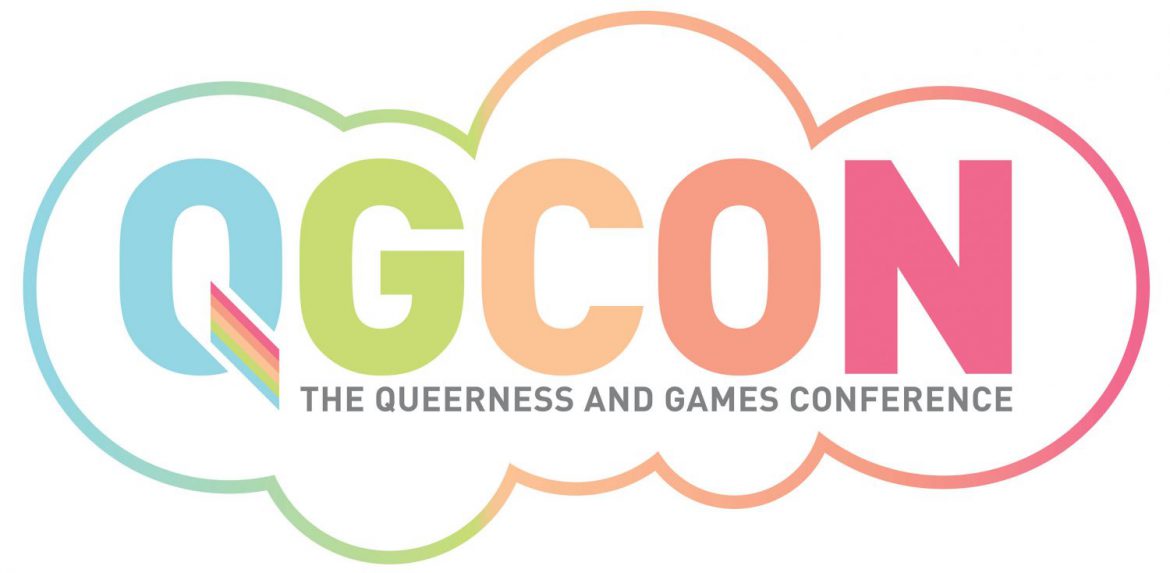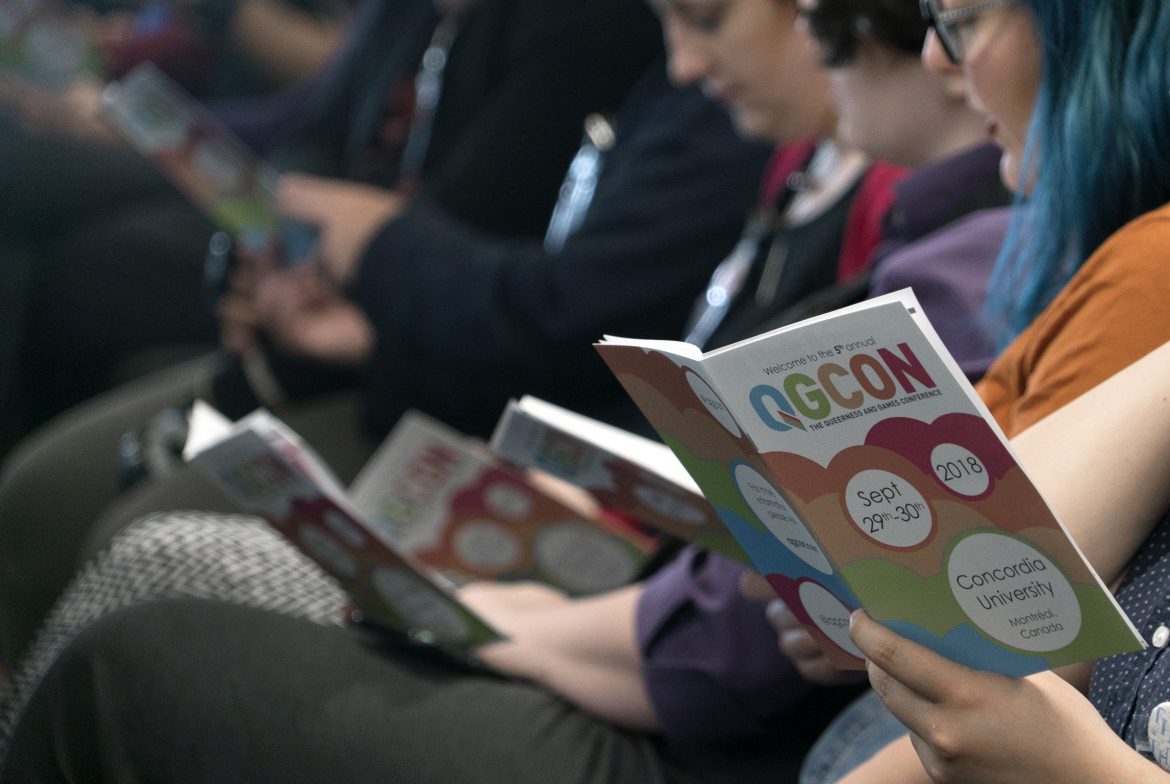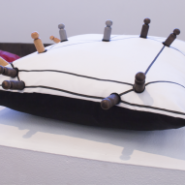
This past September, Concordia University was host to the fifth iteration of The Queerness and Games Conference (QGCon). Featuring dozens of presenters from across academia, industry, activism, and the arts – and putting a focus on accessibility, inclusion, and creativity – QGCon explored topics ranging from queer representation in videogames to affective labour in the games industry. An annual, community-oriented, nationally-recognized event, QGCon is dedicated toward exploring the intersection of LGBTQ issues and video games.
Quick Facts
- Hosted at Concordia University in Montréal on September 29 & 30.
- Over 250 registered attendees.
- 2 keynote speakers and over 35 presenters from across Canada and the world.
- 26 games featured in QGCon’s arcade.
- Sponsored by TAG, Milieux, Ubisoft, gc2b, and Unity, and EA.
Previously hosted at UC Berkeley and the University of Southern California, this year marked the conference’s first foray into Canada – operating out of the heart of downtown Montréal. Organizer Dietrich “Squinky” Squinkifer was the driving force behind the conference’s move to Quebec. “I was present for the first year of QGCon back in 2013, and I had recently brought up the idea of bringing the conference to Concordia, where I am currently based as a scholar. It’s the first time we’ve held QGCon outside of the United States and also the first time we’ve had it on this side of the continent!”

Photo Credit: Vjosana Shkurti
QGCon’s busy schedule was bookended with keynotes from the University of Washington’s Katherine Cross and New York University’s Mattie Brice. Cross’ presentation, The Queer Avatar of Failure, explored the anger that may emerge when a player’s ingame character can’t fulfill their expectations of power and desire. Mattie Brice drew upon personal experience for her presentation, Past, Present, Future: Divining Our Playful Futures, and pondered how play can affect actual change upon the world.
“In addition to being excellent keynotes, both Katherine and Mattie are trans women of colour,” Squinky was quick to point out. “This was a deliberate decision by the organizational team, as we felt it was really important to increase the diversity of our keynotes while also highlighting these brilliant thinkers who exist at the intersection of queerness and games.”
In addition to many of the traditional conference offerings, such as panels and workshops, QGCon also hosted a weekend-long arcade.The QGCon arcade celebrated queer works and the work of queer creators and encouraged visitors to “play differently.”
Among the vast array of games was the Kickstarter success story Boyfriend Dungeon. Created by the Montréal-based Kitfox Games, Boyfriend Dungeon sees the player fending off dangerous monsters while taking their weapons on romantic dates. Advertising itself as a “shack-and-slash” adventure, the game encourages a tasteful approach to male, female, and non-binary romance.
However, the arcade was by no means strictly designated for commercial releases. Scholars, individuals, and independent developers alike were welcome to contribute to the space, and did so with both digital and analog games.
For example, Rachel Burton and Klew Williams brought their interactive fiction, Love, Thy Neighbor, to QGCon. Styled as a classic text adventure, the game simulates the experience of growing up queer in small-town and small-minded America and touches on many stumbling blocks of queer youth, including fading friendship. Brianna Shuttleworth’s Pillow Talk enables explorations of communication, external stresses, and past romances with your current partner – and takes place on a throw pillow placed between the two participants. Encouraging physical contact between partners, many players hold hands throughout the game experience.
 Love, Thy Neighbor |
 Pillow Talk |
When asked about the call for submissions, Squinky noted that it was actually quite easy to fill up the arcade space. “As many of the larger game festivals, such as IGF and Indiecade, get bigger and less accessible, there is definitely an increased demand for exhibition space. I think at the very first QGCon we only had three or four games in the arcade and now we have a lot – almost thirty!”
Although the arcade experience was for attendees only, many of the conference’s proceedings will be shared freely online in the coming weeks. If you weren’t able to make it out to QGCon in person, be sure to follow the conference’s YouTube channel and Twitter feed for updates. And stay tuned to the QGCon website over the coming months for news about the next installment of the conference.
